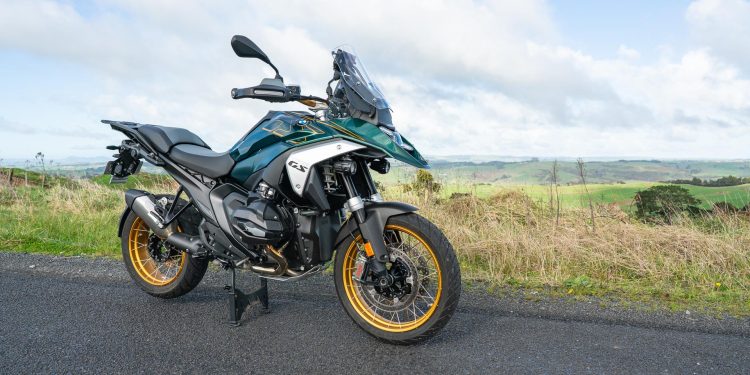2024 BMW R 1300 GS review
Words/Photos: Peter Louisson
Those wanting a bike that can do it all, and especially the expansive trips, must have the BMW R 1300 GS on their list.
If you want the consummate GT for fast long distance touring, then it will likely have a V8 or V12 engine and cost a truckload in New Zealand. How about the equivalent on two wheels though? Well, you’re looking at the most popular, BMW’s R 1250 GS recently updated to R 1300 GS status.
And having ridden it ‘on tour’, it is hard not to understand why it is now considered the default long distance weapon if four wheels is two too many. Plus, it won’t cost the equivalent of a modest Kiwi home.
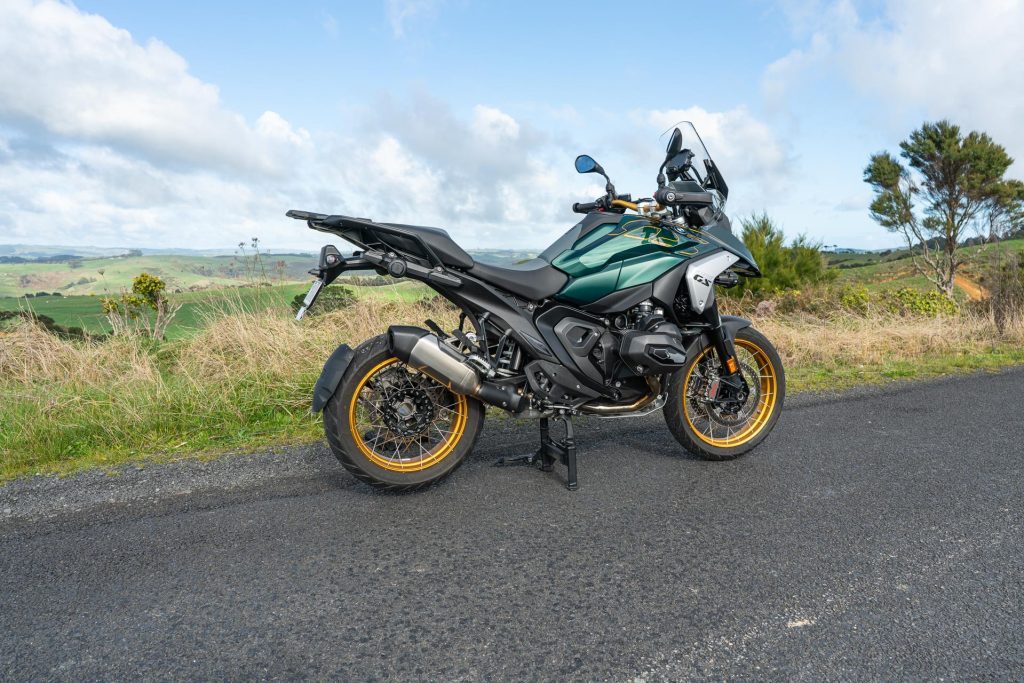
Honestly, it only takes a few clicks of riding the BMW R 1300 GS to understand why has become so cherished globally.
And while it was the ‘Long Way’ TV series that gave it the shot in the arm it never really needed, the bike does stand up all by itself, functionally speaking.
It even looks terrific in its latest guise, with the special X-shaped headlamp, and all the little aero additions to keep the weather off and road noise muted.
Some of the electronics have crossed over from BMW’s dual-tracker division. There are items like blind spot monitoring and adaptive cruise control, even forward collision warning.
Why ACC has taken so long to turn up on a bike I’m not really sure. Perhaps it’s the expense. But on a bike that costs $45,990 – ours had the Option 719 milled parts package so was $49,490 – it’s not such an issue in the scheme of things.
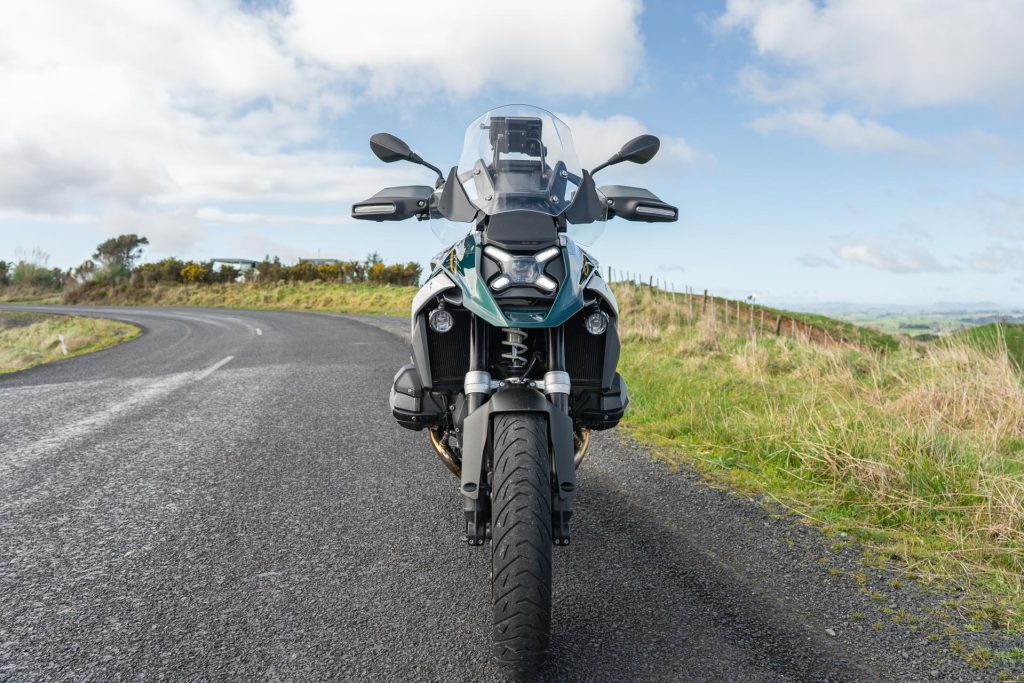
Last time we looked, the R 1250 GS cost closer to $35k but the bikes arriving here have pretty much every option fitted.
Included amongst those is electronic semi-adaptive suspension (amongst the best I’ve sampled), a heated pillion seat, a quickshifter, a luggage rack for a top box, and electronic screen height adjustment.
There’s also Matrix LED headlamps, DRLs, heated grips, ride modes, adjustable levers, hill start control and four “options” packages as standard.
All too much? BMW is also bringing in a model with some items deleted, like the special lights (still LED), the variable ride height for ease of mounting, and powered screen (manually adjustable for height instead) so it can offer a base model for less than $40k.
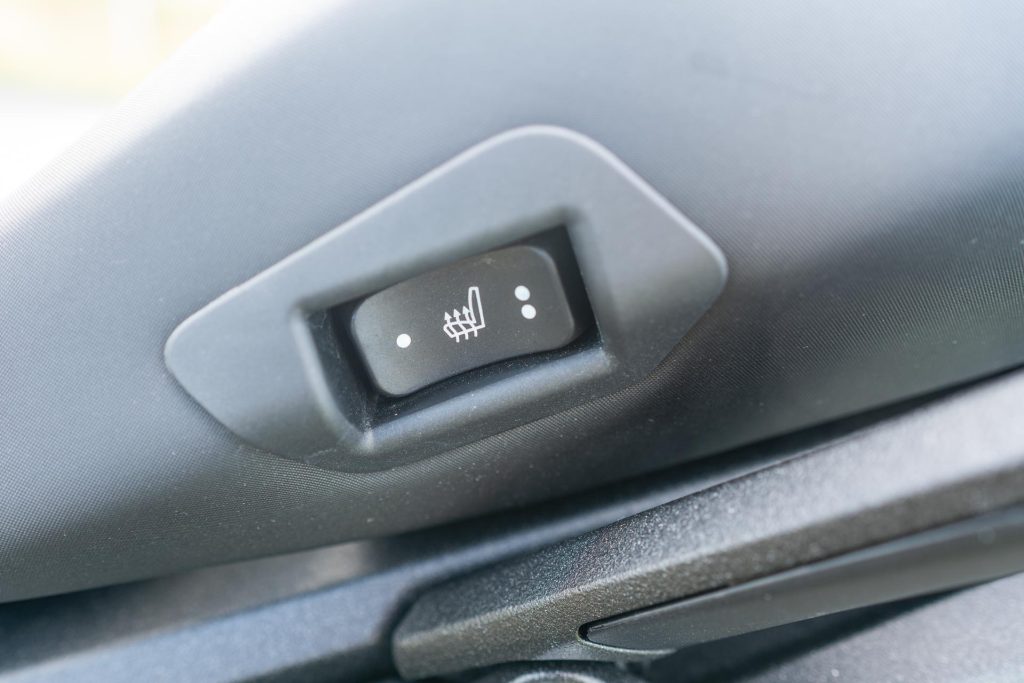
To the ride itself
Being a boxer twin the centre of gravity is low, and the riding position great. It is around 15kg lighter than before, a new frame using the engine as a stressed member and there’s a lithium-ion battery.
The rejigged Telelever front suspension and Paralever shaft drive weigh less too. All up it’s 237kg. That’s a lightweight compared with some of the traditional tourers. However, they have panniers as standard; they’re extras here.
Once underway, you note just how smooth the shifts are both up and down the box using the quickshifter device. And being a shaftie there’s no clunking when cold with the BMW R 1300 GS.
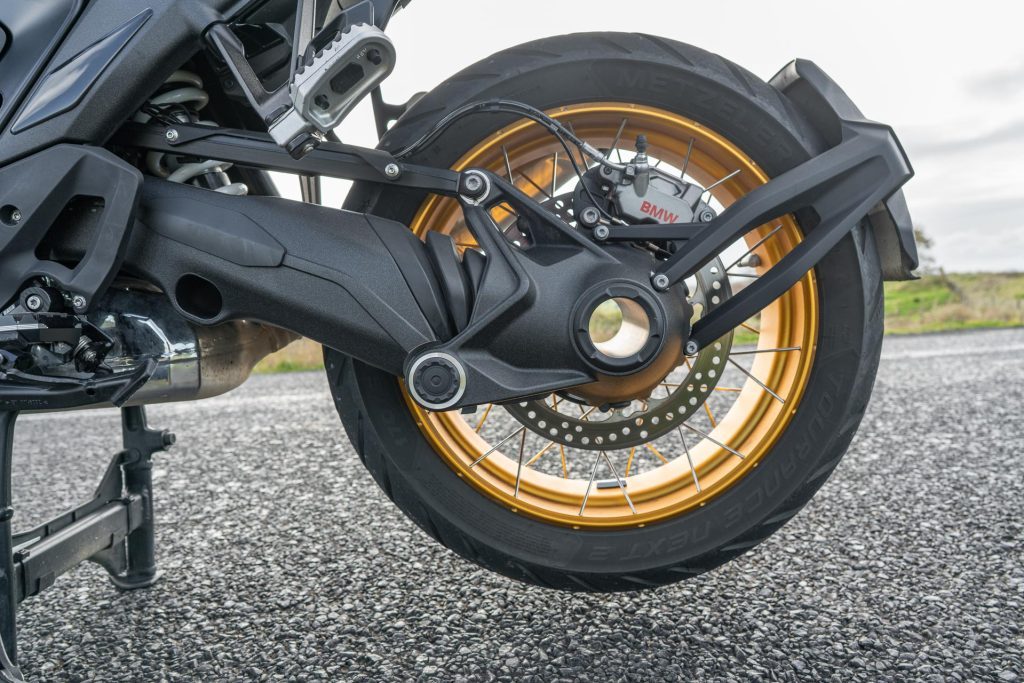
Vibes are next to nil, mirrors clear.
A new multiswitch makes minor tasks a bit easier, like turning off TC, or raising/lowering the screen. When fully extended you can ride along with your visor raised, while buffeting isn’t an issue.
Along with handguards and heated grips, this is one bike you can ride in winter without experiencing the big freeze.
Because it’s designed to be up for anything, we took it down highway 22 where the road surface was a mix of all conditions.
It’s a tricky enough stretch of road at the best of times but this made things about as safe and easy as you could possibly ask for on two wheels.
Despite the wide bars that take a bit of getting used to, it isn’t the quickest turning machine but it sure is competent, secure, compliant. Its Metzeler Tourance Next 2 tyres are perfectly fit for purpose, optimised for tarmac but good also for gravel.
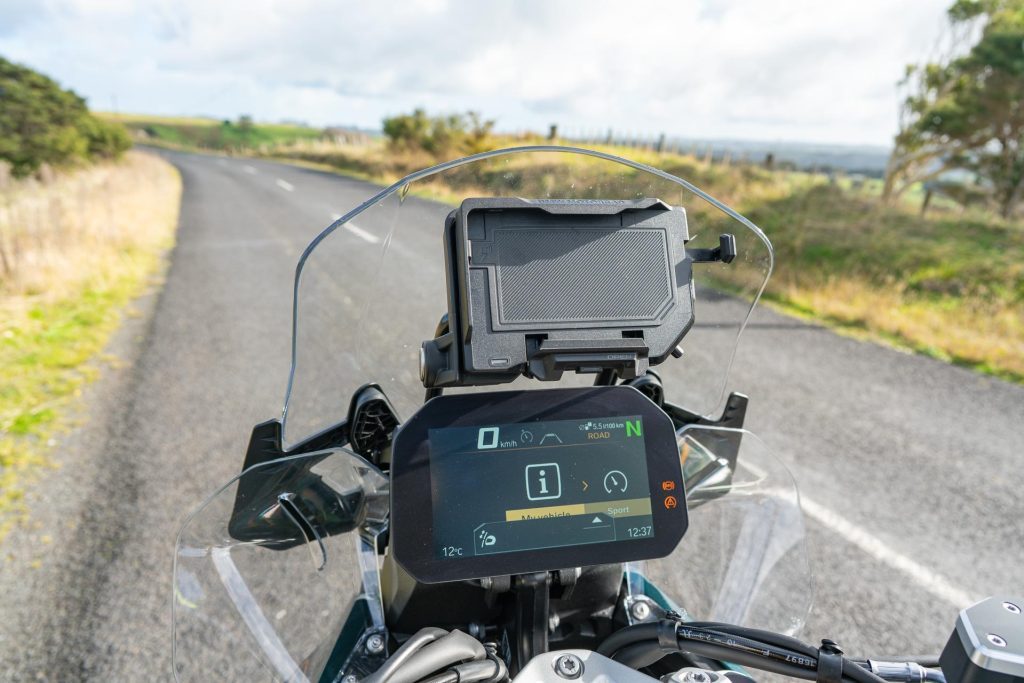
We headed off down a fairly extended stretch of metal road, some of it pretty gnarly and this didn’t put a foot wrong.
Comfort levels are about as good as you could hope for on a motorcycle. The Road mode you’d select for town and motorway work, Dynamic for the more interesting paved roads.
The firmer setting still gives a decent ride, and it ups the engine tempo too. Not that it’s exactly wanting in the normal Road mode. But the torque feels even more forthcoming from low revs in this setting.
Quicker than you’d imagine
My this can haul. Motorrad reckons zero to 100 in 3.4sec. We struggled to achieve that initially because the front wheel kept trying to climb the wall.
So we decided to try launching in second gear whereupon it managed a best of 3.3sec. It’s overtaking time of 1.49sec is nearly superbike quick. With variable valve timing it is immensely strong at low revs.
For most of the time we just used engine speeds of about 2500-4000rpm. The high-lift cam comes into play at about 5000rpm and the uptick in brute force is noticeable. But keeping below the high power zone keeps fuel use real.
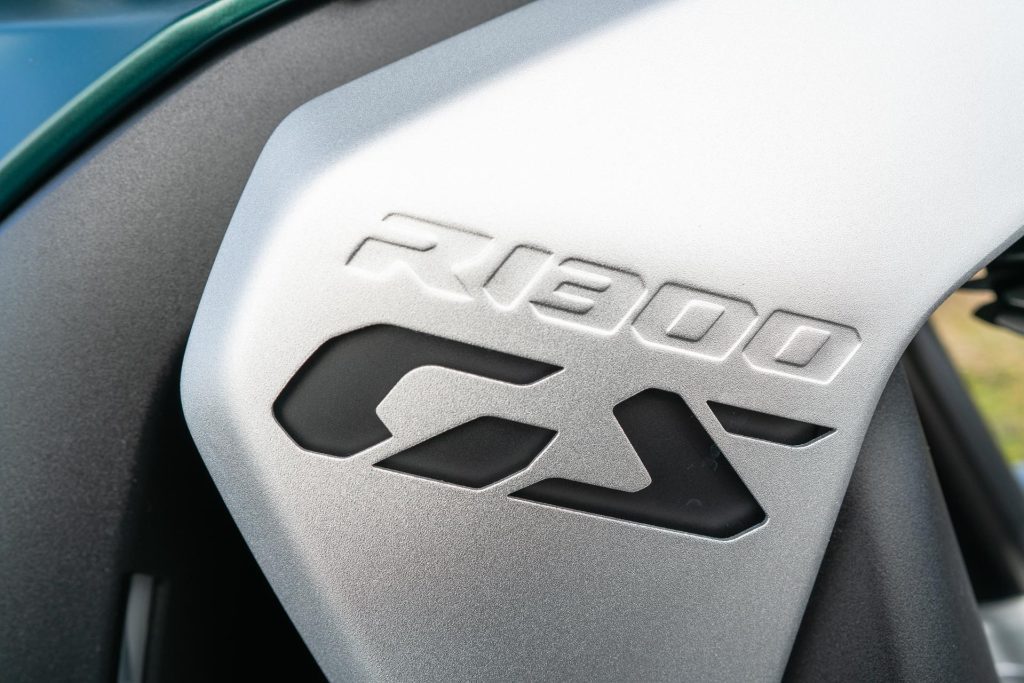
Performance in the opposite direction is also impressive, thanks to uprated calipers and bigger discs. Our best emergency stop was also our first at 36m, which is unbelievably good for something that has a relatively conventional weight split.
The rear brake is a ripper too, so strong on its own and comforting when you’ve misread a corner or it tightens up unexpectedly.
I’ve never really been convinced of BMW’s iRide twirly controller devices. Others are easier to operate. However, the TFT screen is very clear and logical, simple to take in at a glance.
It informed us of fuel use in the low fives, not bad for something that puts out 107kW at 7750rpm and 150Nm at 6500rpm.
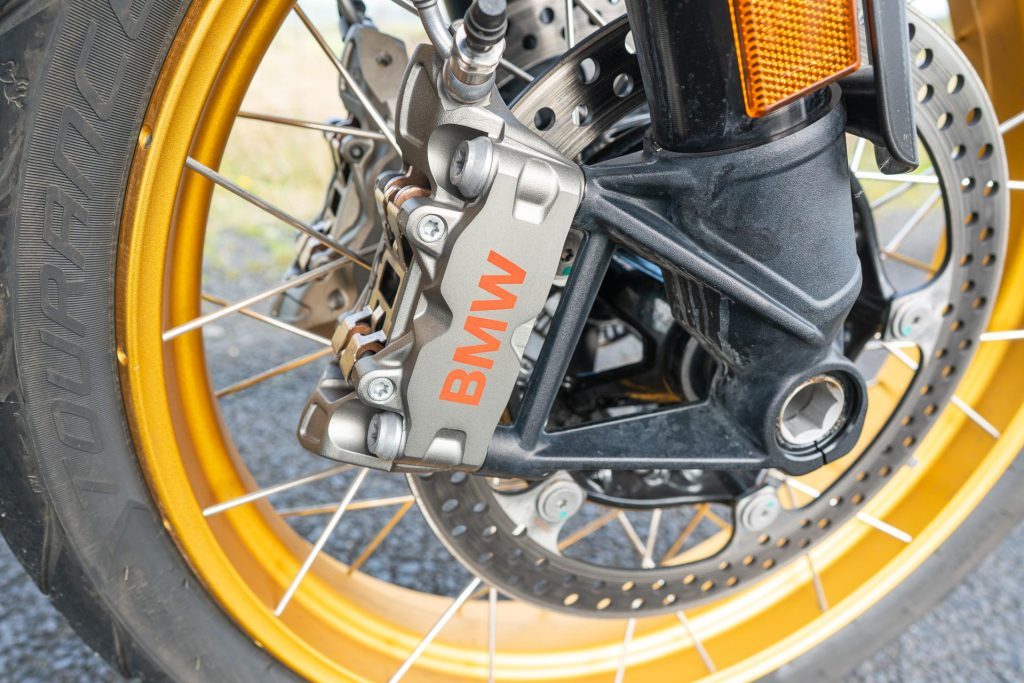
Peak torque is available from 3800-7500rpm but we reckon 85 per cent is available from about 2500rpm. It will pull away smoothly and without snatching from 2000rpm.
Hell of any engine this, and backed up by a superb transmission.
All-round competence
I guess what makes the R 1300 GS so damn good is that it’s a consummate allrounder. It goes, stops, handles and rides about as well as anything out there in the sector, and it looks even better than it used to with its X-light front end.
Rounding things out is the semi-active suspension that lowers ride height from 850 to 820mm to make mounting and dismounting easier.
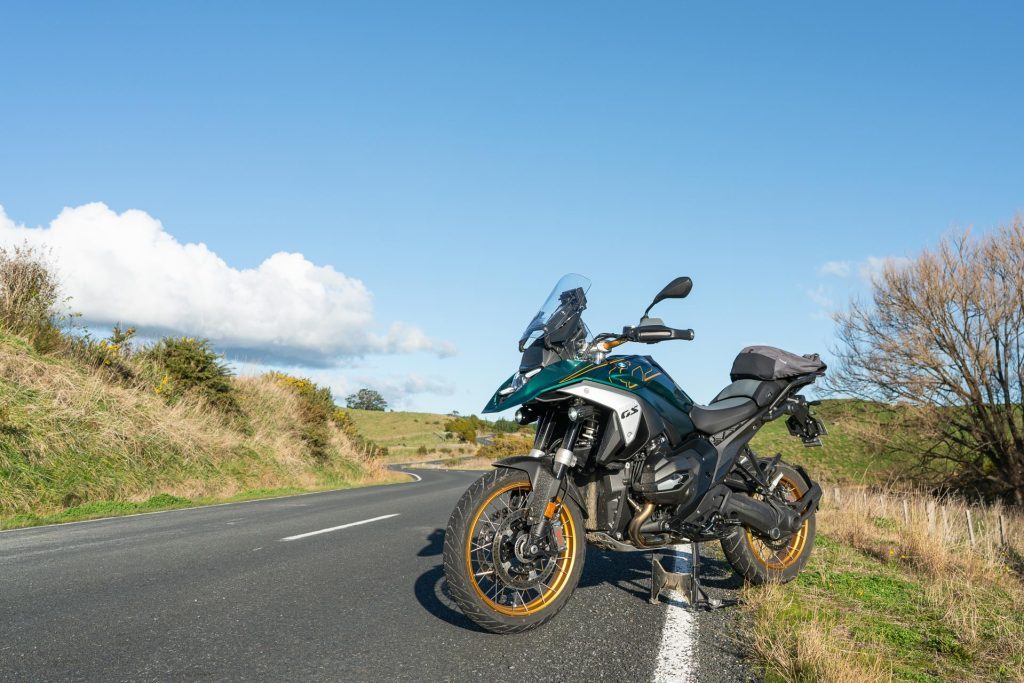
It’s not quite the value it used to be but then everything has gone up in price. Bringing in a second model at a sub $40k price with relatively unimportant things removed isn’t a silly move either.
So yes, the biggest GS is still very highly recommended for well-heeled folk that live for long distance touring and adventuring. It never fails to make you smile.
| Model | BMW R 1300 GS |
| Price | $45,990 |
| Format | Liquid-cooled / Fuel injected / Flat-twin |
| Engine | 1300cc |
| Max Power | 107kW @ 7750 rpm |
| Max Torque | 149 Nm @ 6500 rpm |
| Cylinder Head | DOHC / 8v |
| Gearbox | 6-speed |
| Drivetrain | Shaft drive |
| Front Suspension | Telelever, fully adjustable |
| Rear Suspension | Paralever, fully adjustable |
| Front Brakes | Four-piston calipers, 310mm twin disc |
| Rear Brakes | Twin-piston, 285mm disc |
| Safety Systems | ABS, TC, Wheelie control |
| Tyre Size | F – 120/70R19 / R – 170/60R17 |
| Tyres | Metzler Tourance |
| Wheelbase | 1518mm |
| Seat Height | 850mm |
| Rake/Trail | 26.2 degrees / 112mm |
| Fuel Capacity | 19 L |
| Measured Weight | 237 kg |
| Weight Distribution | F – 109 kg / R – 128 kg |
This article first appeared in the September 2024 issue of NZ Autocar Magazine.


